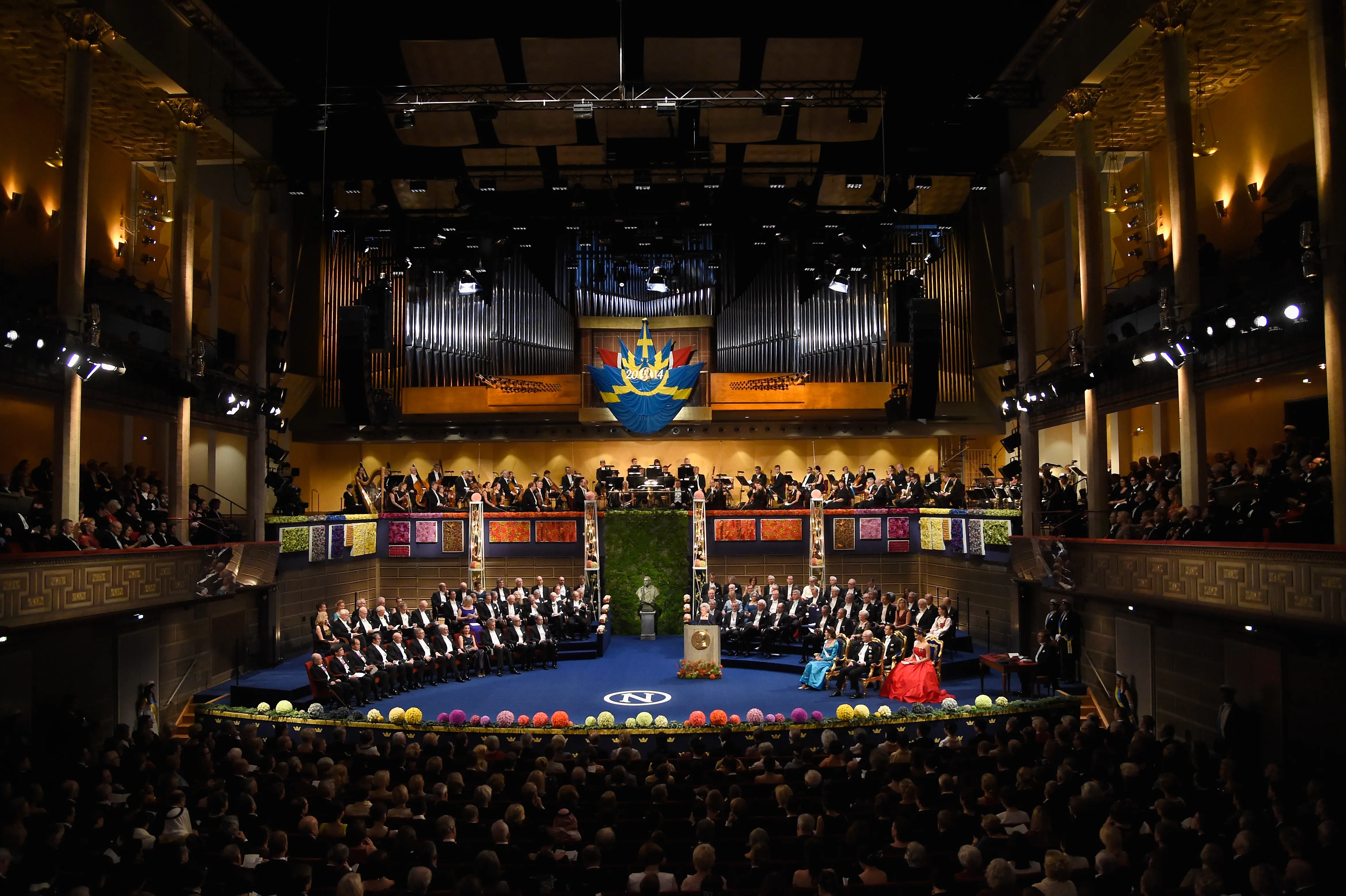Who are Mary E. Brunkow, Fred Ramsdell and Shimon Sakaguchi? 3 scientists to share the 2025 Nobel Prize in medicine
-
 STOCKHOLM, SWEDEN - DECEMBER 10: A view of the atmosphere at the Nobel Prize Awards Ceremony at Concert Hall on December 10, 2014 in Stockholm, Sweden. (Photo by Pascal Le Segretain/Getty Images)
STOCKHOLM, SWEDEN - DECEMBER 10: A view of the atmosphere at the Nobel Prize Awards Ceremony at Concert Hall on December 10, 2014 in Stockholm, Sweden. (Photo by Pascal Le Segretain/Getty Images)The announcement of the 2025 Nobel Prize winners kicked off on Monday, October 6, with Nobel in medicine being divided among a trio of scientists - Mary E. Brunkow, Fred Ramsdell, and Shimon Sakaguchi.
CNN reports that the scientists are sharing the Nobel Prize for their "fundamental discoveries relating to peripheral immune tolerance," for identifying regulatory T cells.
BREAKING NEWS
— The Nobel Prize (@NobelPrize) October 6, 2025
The 2025 #NobelPrize in Physiology or Medicine has been awarded to Mary E. Brunkow, Fred Ramsdell and Shimon Sakaguchi “for their discoveries concerning peripheral immune tolerance.” pic.twitter.com/nhjxJSoZErPer the news outlet, these cells play the role of our immune system's security guards. They prevent our immune cells from attacking our own body - which is what happens when someone suffers an autoimmune diseases.
Mary E. Brunkow is a 64-year-old scientist who completed her doctorate from Princeton University. Brunkow is currently serving as the Senior Program Manager at Seattle's Institute for Systems Biology.
Fred Ramsdell is a 65-year-old immunologist who graduated in biology from University of California, San Diego, in 1983, and got a Ph.D. in immunology in 1987. Ramsdell currently works as a Research Director at San Francisco's Parker Institute for Cancer Immunotherapy.
Shimon Sakaguchi is also an immunologist. The 74-year-old received his higher education from Japan's Kyoto University, where he completed his M.D. in 1976 and Ph.D. in 1982.
Following his doctoral, Sakaguchi came to the US, where he did his postdoctoral studies and Stanford University and John Hopkins University. Sakaguchi was the Director of the Institute for Frontier Medical Sciences at the Kyoto University. In 2011, his lab was moved to Osaka University.
Olle Kämpe - the Nobel Committee chair - spoke about the discoveries, saying:
"Their discoveries have been decisive for our understanding of how the immune system functions and why we do not all develop serious autoimmune diseases."
CNN reports that the trio's findings have opened new horizons for the development of medical treatments that could potentially cure autoimmune disease.
Medicines developed using their discovery are also expected to offer more effective cancer treatments in future, as well as to simplify the complications faced after organ and stem cell transplants.
The discoveries in peripheral immune tolerance were inspired by Shimon Sakaguchi's 1995 discovery
Our immune system is an evolutionary masterpiece. Every day it protects us from the thousands of different viruses, bacteria and other microbes that attempt to invade our bodies. Without a functioning immune system, we would not survive.
— The Nobel Prize (@NobelPrize) October 6, 2025
One of the immune system’s marvels is its… pic.twitter.com/TzBWuIrTgnThe Nobel Committee also shared that the trio's discoveries in peripheral immune tolerance were inspired by one of their older discoveries. In 1995, Sakaguchi made a discovery that supported the explanation of why our immune systems generally do not attack our bodies.
It was on Sakaguchi's 1995 discovery that both Ramsdell and Brunkow built upon in the early 2000s, explaining what made some of us more vulnerable to autoimmune diseases than others.
After years of experiment on mice, they identified a mutation in a particular gene, naming it Foxp3. Their findings were linked to Sakaguchi's discovery in 2003, ultimately proving that the Foxp3 gene was responsible for the development of the regulatory T cells.
TOPICS: Nobel Prize
- "He's about action, not debate points" - Internet reacts to John Cena shutting down a fan asking if Trump should've won the Nobel Peace Prize
- “Not Trump”: Internet reacts as María Corina Machado wins 2025 Nobel Peace Prize despite President’s supporters' campaign
- Did Gavin Newsom win the Nobel Peace Prize? Viral article claim debunked
- Nobel-winning gene editing scientist Jennifer Doudna will be the subject of limited series The Code Breaker